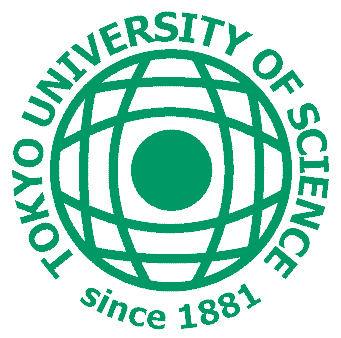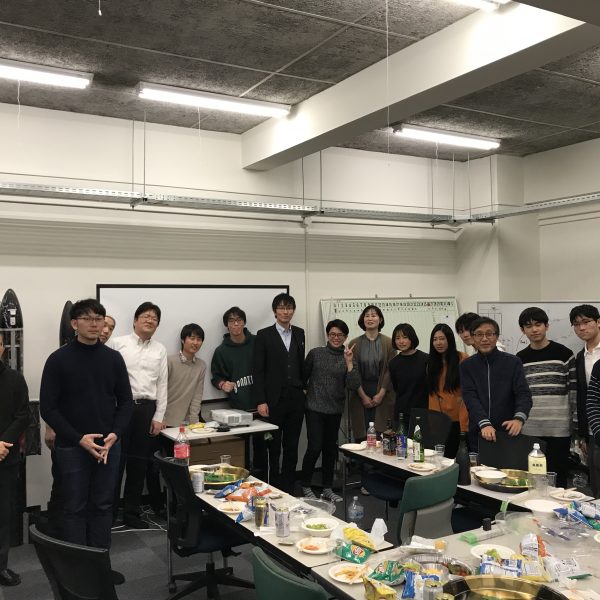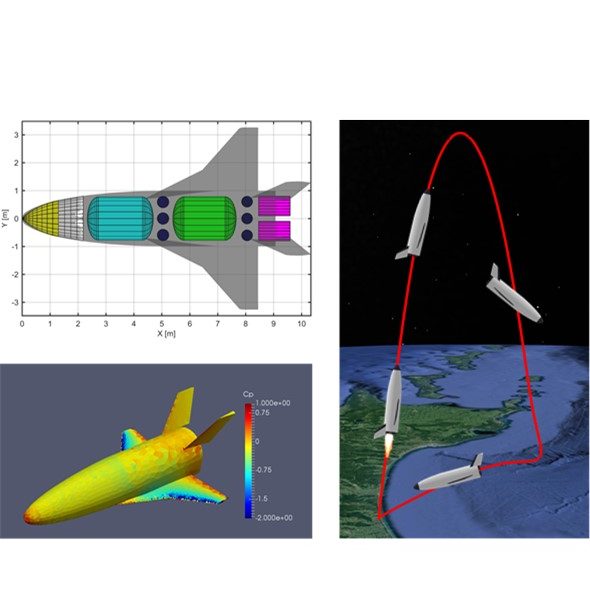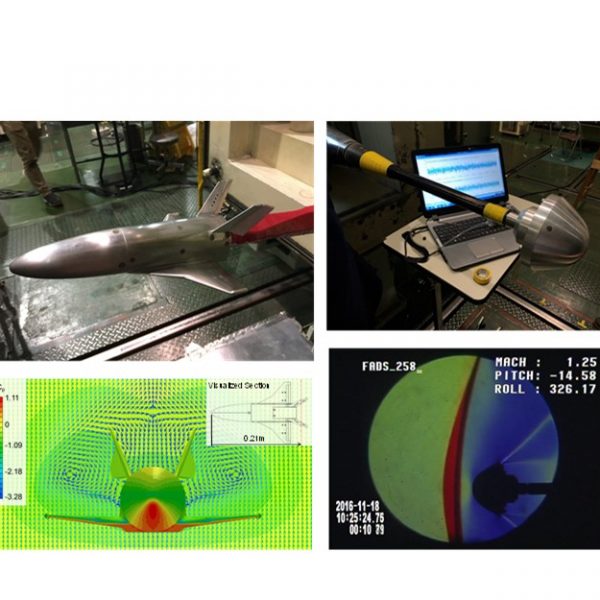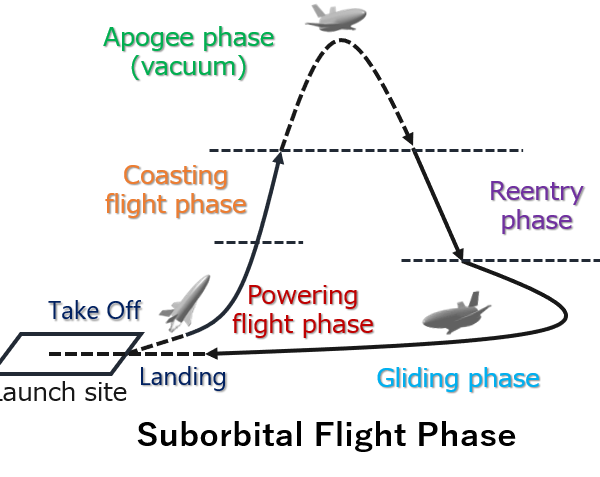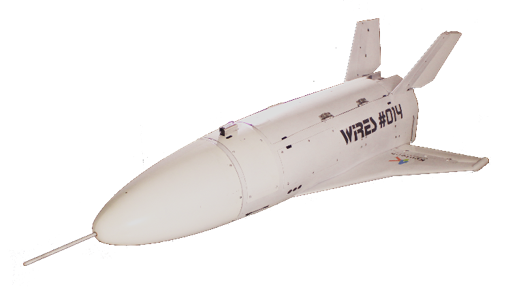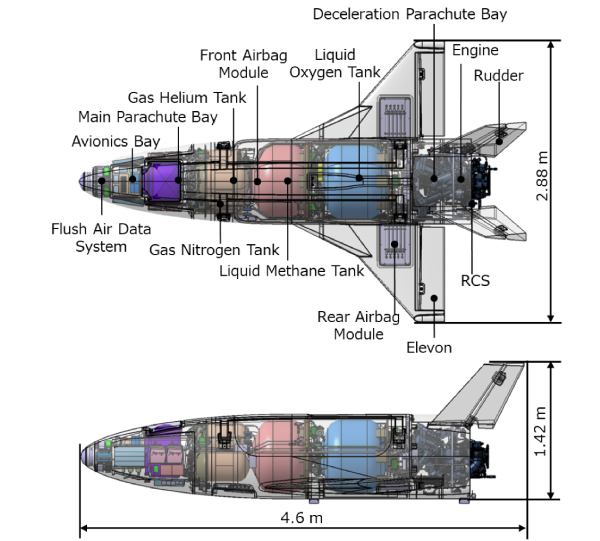Strong interactions between vehicle design and trajectory design must be considered for the efficient design of winged reusable space transportation systems. We have studied system optimization technologies or MDO (Multidisciplinary Design Optimization), which makes it possible to optimize a system composed of interacting disciplines or sub-systems in an integrated manner.
In addition to working on theoretical researches for developing advanced optimization methods, we have applied them to system design of winged suborbital vehicles.
Reusable space transportation systems have wide range of flight conditions including supersonic and hyper-sonic regimes. There are several challenging issues on flight technologies in such high-speed environment due to the compressibility of air.
Among them, we have studied aerodynamic shape optimization and air data sensing system considering high-speed flight environment. These researches are carried out by using CFD (Computational Fluid Dynamics) and wind-tunnel testing.
Based on the state quantity obtained from navigation, a target trajectory that can fly is generated by the set guidance law, and the target state quantity that realizes it is given. The target trajectory is realized by giving the manipulated variable to the controlled object by the control law so as to follow the given target state variable.
Since 2012, WIRES#014 is under development, it has a 1.7m length and aims to reach an altitude of 1km. This vehicle conducts flight test in order to verify the preliminary technologies of the designed on-board autonomous NGC system.
In order to demonstrate elementary technologies of reusable space transportation system, we have developed WIRES#015 since 2013. This rocket will be launched on Mojave desert, US.

